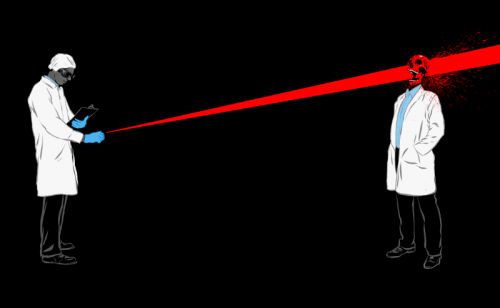Laser treatment, like other medical treatments, can achieve desirable results if performed correctly, leaving clients happy. However, like other therapies, it carries certain risks and side effects.
The extent of these risks depends on the operator’s skill, known as “technique.” Imagine if someone who doesn’t know how to perform surgery were to perform a simple surgery like cutting out a skin tag. Would you be willing to let them perform the procedure? Even simple surgeries carry risks and potential complications. A highly experienced doctor can significantly reduce the risks. So, what are the risks of laser treatment?
Different laser devices carry varying risks, which can be analyzed from the perspectives of both the client and the operator. The operator? Yes! Laser treatment carries risks for the operator as well. Safety awareness is crucial. I have seen people treat laser devices like toys, shooting them randomly into the air. If the laser beam reflects off metal and enters the eyes, it can cause damage to the eyes. Improper use can also cause a fire, resulting in a fire alarm. Therefore, the operator must be careful when using the laser device.
For the clients receiving treatment, different types of lasers carry varying degrees of risks and side effects. For instance, lasers used for hair removal, wart removal, and skin rejuvenation all carry significant differences in risks. Let’s first talk about common side effects.
Do you remember what type of skin Asians have? For example, in Hong Kong, most Asians have skin types III and IV (Fitzpatrick skin types III/IV). This type of skin is more prone to hyperpigmentation, which is the so-called “darkening effect,” after being damaged. This is due to the skin being heated by the laser, resulting in inflammation and a natural repair mechanism called a pigment reaction, causing the skin to darken. This is a common phenomenon, and if properly taken care of, it typically fades within 2 to 6 months, depending on the individual’s skin quality. Besides darkening, Asians are also more prone to developing white spots (commonly known as hypopigmentation). In particular, lasers that target melanin can remove normal melanin in the epidermis, causing white spots to appear. Like darkening, hypopigmentation is typically temporary. However, more and more people have recently sought medical attention due to hypopigmentation. These people typically receive Q-Switch 1064 laser treatment too frequently, causing destruction to the melanocytes, making it difficult to treat and potentially permanent.
Other side effects include scars, pain, and discomfort. If the laser treatment area becomes inflamed, scarring may occur. This typically occurs in people with sensitive skin.
In conclusion, while laser treatment can produce significant results, it is crucial to understand the risks involved. It is also important to seek treatment from a highly experienced operator and to follow post-treatment care instructions to minimize side effects and complications.

